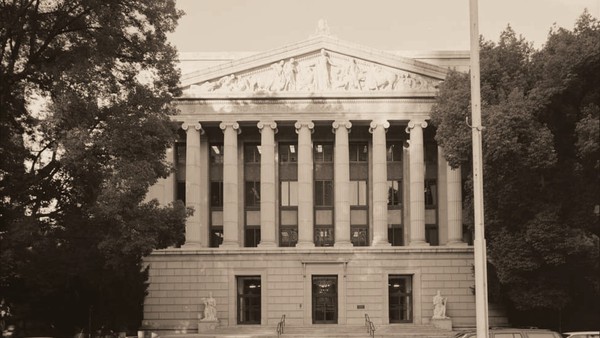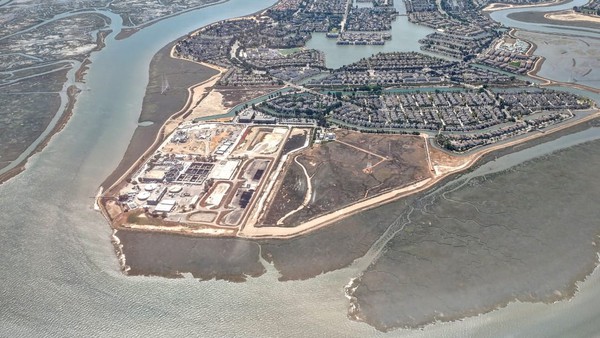As the 2024 election approaches, we’re going to turn our gaze away from the drama and tragic-comedy on the national stage, and instead play a little follow-the-money.
If you opened the ballot that arrived in your mailbox last week, you may have noticed two bond measures totalling $20 billion. (Yes – that’s two-zero times a B-B-B-Billion dollars.)
This is how the state of California does the big business of running the fifth-largest economy in the world. We hold an election and say “yay” or “nay” to the biggest questions about spending money. (To be clear, that’s “yay” not “Yay!”)
And while I don’t blame you if you’re daunted by the sheer size of those numbers, let me tell you that the one bond measure provides the first investment in California’s school facilities in nearly a decade, and the other helps protect us all from dying in a nightmarish climate-crisis-induced catastrophe.
Proposition 4, Parks, Environment, Energy, and Water Bond Measure, authorizes a $10 billion bond to cover the costs of programs addressing issues including sea level rise and sustainable farming. It is needed to offset recent cuts to popular programs that address climate-related issues.
Proposition 2, Public Education Facilities Bond Measure, allows the state to issue a $10-billion bond to pay for the repair, renovation and modernization of public school buildings and community college campuses. Of that money, $8.5 billion goes toward TK-12 schools while community colleges get $1.5 billion.
And that’s not all: Prop 2 has resulted in a slew of local bond measures—because to receive these state funds, local school districts have to put up their own money and apply for matching funds from the state. This is being done on a sliding scale that provides a bigger match to low-income districts.
Okay, so how exactly do bonds work? To help it make more sense, here’s our friend and colleague Chris Neklason.
The salmon have begun their migration up Taylor Creek in South Lake Tahoe.
(10/14/2024) South Tahoe Now
The Live Your Dream grants are open to women who provide the primary financial support for their families and are enrolled in an educational program with an aim to become financially self sufficient.
(10/14/2024) Roseville Today
An introduction to Paul Penn who is running for a seat on the El Dorado Irrigation District board of directors for District 1.
(10/13/2024) Mountain Democrate
Learn how to make give your input on the Tahoe Transportation District Short Range Transit Plan.
(10/12/2024) South Tahoe Now
After hearing concerns from local mobile home park residents and owners, the El Dorado County Board of Supervisors has established an ad hoc committee to explore and address issues.
(10/11/2024) Mountain Democrat
In their October 10 meeting, the Lake Tahoe Visitors Authority distributed $75,000 to 26 local nonprofits, part of the over $120,000 in donations generated by this summer's American Century Championship event.
(10/10/2024) South Tahoe Now
A free virtual workshop will be held on October 25 to inform residents about Medicare and Medicare Advantage plans available in El Dorado County.
(10/10/2024) South Tahoe Now
A letter of introduction from Fabian Carballo, who is running for the Area 3 seat on the Lake Tahoe Unified School Board of Trustees in the November election.
(10/10/2024) South Tahoe Now
An introduction to the candidates running for the District 5 seat on the Placer County Board of Supervisors in the November election.
(10/10/2024) Moonshine Ink
An introduction to the candidates running for seats on the Tahoe Forest Hospital District Board of Directors in the November election.
(10/10/2024) Moonshine Ink
A Q&A with the candidates running for seats on the Truckee Tahoe Airport District Board of Directors in the November election.
(10/10/2024) Moonshine Ink
With the first phase of construction complete, residents are now moving into the 68 units of affordable housing at Sugar Pine Village in South Lake Tahoe.
(10/09/2024) South Tahoe Now
Applications are open for Placer Fish and Game Commission grants for projects contributing to the safeguarding, conservation, propagation and preservation of local fish and wildlife.
(10/09/2024) Roseville Today
Volunteers are needed for the Placer County Free Tax Prep program for the 2025 tax season.
(10/09/2024) Roseville Today
The South Tahoe Public Utilities District is holding a public meeting on October 24 for a discussion on a future recycled water plan.
(10/08/2024) South Tahoe Now
Only a few months delayed, Gov. Gavin Newsom finally got to take his victory lap over the oil industry on October 14.
(10/15/2024) CalMatters
Last week, VotingMatters went to public libraries, colleges, and a museum to talk about California’s ballot propositions. So far, VotingMatters has reached more than 750 people across 20 events, bringing crucial election information to voters around the state.
(10/14/2024) CalMatters
After the Watergate scandal, California voters approved a ballot measure that created the Fair Political Practices Commission — an independent, nonpartisan agency to police election campaigns and investigate political ethics violations.
(10/14/2024) CalMatters
The state Senate signs off on Gov. Newsom’s bill to stop spikes in California gas prices. A final vote is scheduled on Monday.
(10/11/2024) CalMatters
California allotted half a billion dollars to help community land trusts across the state. But budget cuts and bureaucracy have land trust advocates back where they were in 2020: seeking state aid to preserve affordable housing.
(10/09/2024) CalMatters
U.S. Senate candidates Rep. Adam Schiff (far left) and Republican Steve Garvey (second) participate in a debate moderated by news anchor Marc Brown (far right) in Glendale on Oct. 8, 2024. Photo by Damian Dovarganes, AP Photo
(10/09/2024) CalMatters
How to apply rebate as part of the recent $80 million state program to electrify homes.
(10/08/2024) The Sacramento Bee


















